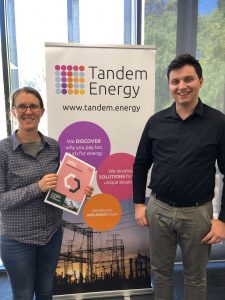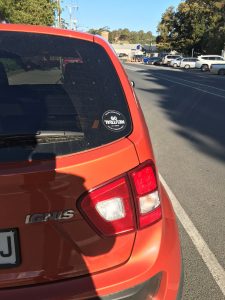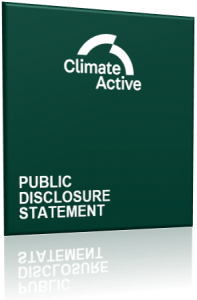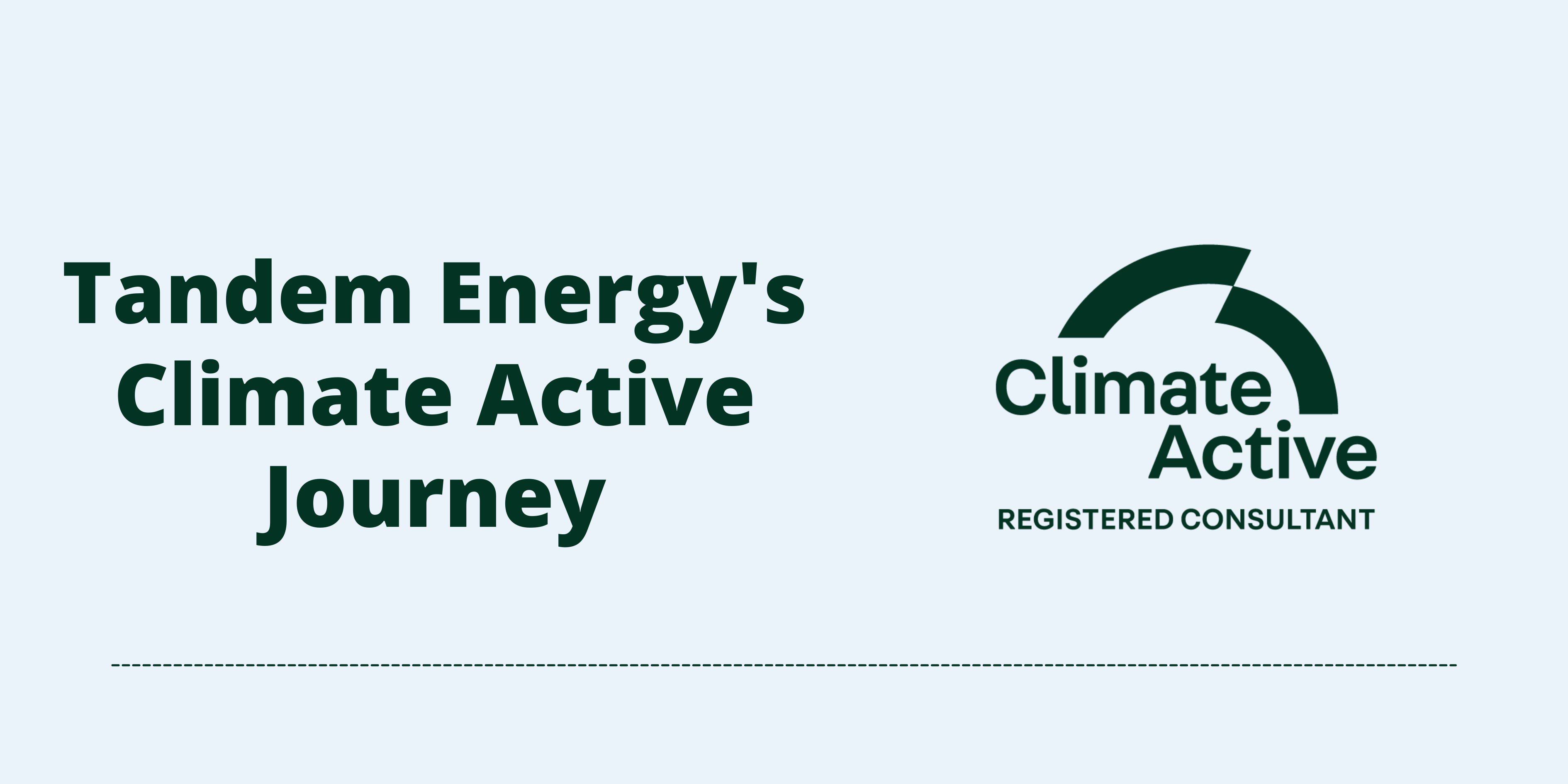After recently completing Climate Active training and becoming registered Climate Active consultants (for all 5 Climate Active certifications: Organisations, Products, Services, Events and Precincts), Tandem staff members Rachel and Jack are excited to begin putting what they have learnt into practice, by helping support businesses to calculate, reduce and offset their greenhouse gas emissions and attain Climate Active Carbon Neutral Standard certification (https://www.climateactive.org.au/).
We have also been busy working away to ensure that Tandem Energy itself is carbon neutral, developing our own carbon emission inventory and taking the steps required to attain our base-year Climate Active Carbon Neutral Standard certification.
Now that we are almost at the finish line in this process, we are taking the opportunity to reflect on what we’ve learnt, and how we can help our clients achieve net zero emissions for their own business.

Rachel and Jack with their first of five Climate Active Registered Consultant Certifications.

Jack’s Ignis with the Go Neutral Carbon Offset sticker.
The first step is always the hardest, and to obtain Carbon Neutral Certification that first step is to develop an emissions boundary for your organisation or service. As an “organisation”, Tandem Energy are working on our Organisation certification, which covers emissions from the business on a day-to-day basis.
Our emissions boundary includes the power used in our office to charge our laptops, the lights, microwave, and the hot water dispenser, alongside the waste we generate, purchased food, and transport (we have already taken steps in this area through the purchase of offsets for our staffs’ private cars with offsets). The emissions boundary will be different for every business, as every company operates differently.
The next step is to collect your data. We have created a customisable inventory system that provides a clear list of what data needs to be collected. To simplify things even further, most emissions are calculated on a costing basis, meaning you don’t need to get the scales out. We recommend going on a financial year basis in your reporting, which simplifies extracting data from your accounting software. And in addition, if your business has a strong work-from-home presence in the past year like us, there is a calculator for that too!
There are rules for what to include in your inventory. Some smaller emission sources can be excluded if they are less than 5% of your total emissions. However, you will need to develop a data collection strategy that will enable you to capture that data for future reporting.


Rachel and Tom’s new Nissan Leaf Electric Vehicle.
In retrospect, what seemed like a significant project in data collection and measurement when we started, turned out to be much simpler to accomplish.
After we had finished collecting data relating to our emissions, the next step was to develop an emissions reduction strategy – how will our emissions inventory be lower next year? You may have seen on our Facebook page that we now have an electric vehicle that replaces one of the combustion engine vehicles we use to visit clients and sites. This will definitely have a significant impact on our inventory when the next reporting period comes around.
Recently, the Town of Gawler has finished installing a solar PV system on top of the building we work from (the Gawler Civic Centre) which means that our scope 2 emissions next year (relating to energy production and consumption), will also be lower. Thanks, Town of Gawler!
Needless to say, we are expecting a very positive report next reporting period.
Now that we know how many emissions we generated last year, we are at the fun part of the process, shopping for carbon offsets. After doing some research, we decided to use South Pole Carbon to purchase our offsets. While there are a number of reputable businesses selling offsets generated through diverse projects around the world, we liked these; they support South Australian biodiversity conservation as well as energy reduction in an overseas glass factory. At less than $30 per tonne of CO2-e, carbon offsets are surprisingly not an expensive investment.

South Pole offers various carbon offsets.

The last step in our Carbon Neutral certification is to complete the Public Disclosure Statement. This formally outlines the emissions we generated, our emissions reduction strategy, and the purchase and subsequent retirement of our carbon offsets. The Public Disclosure Statement is an excellent opportunity to outline why carbon neutrality is important to your business’s ethics and as a benefit for your broader community.
If this resonates with your business and you want to start your carbon neutral journey, contact us to get started!
FYI
For businesses within the City of Adelaide boundary, the City of Adelaide is offering up to $5,000 for greenhouse gas inventory development for carbon neutral certification purposes (in the Organisation, Precincts, Buildings or Events categories), plus $2,500 for other steps to reduce your emissions. Visit the Sustainability Incentives Scheme | City of Adelaide to learn more.

